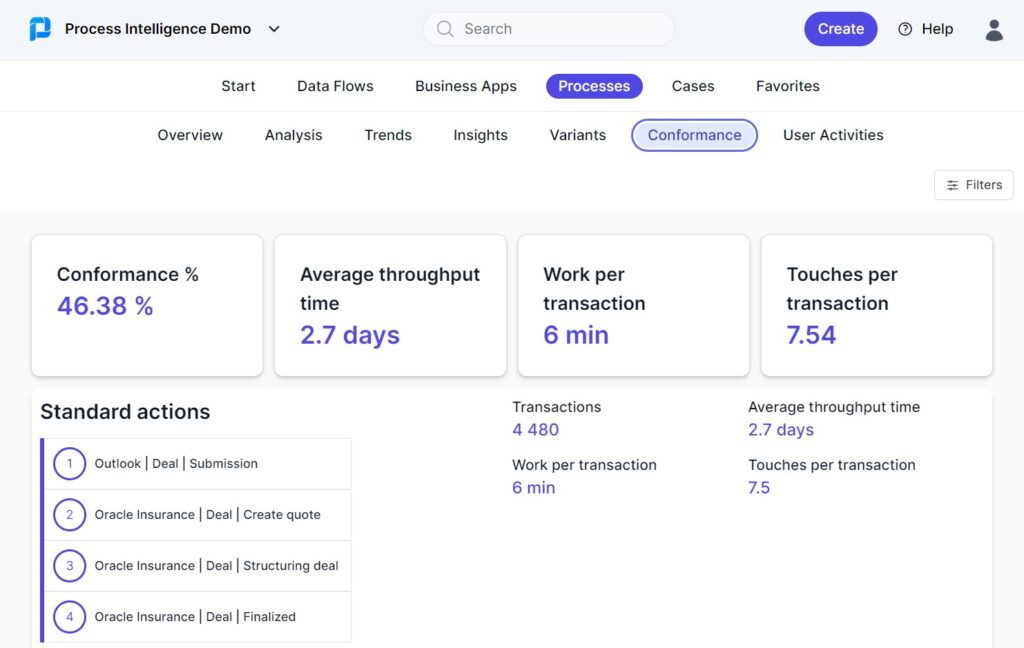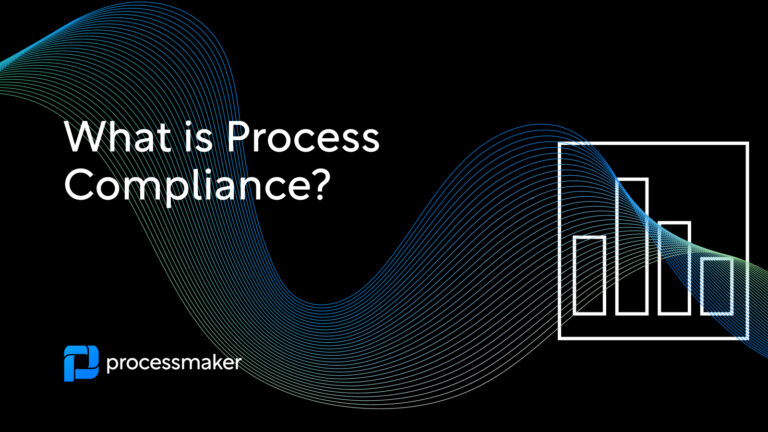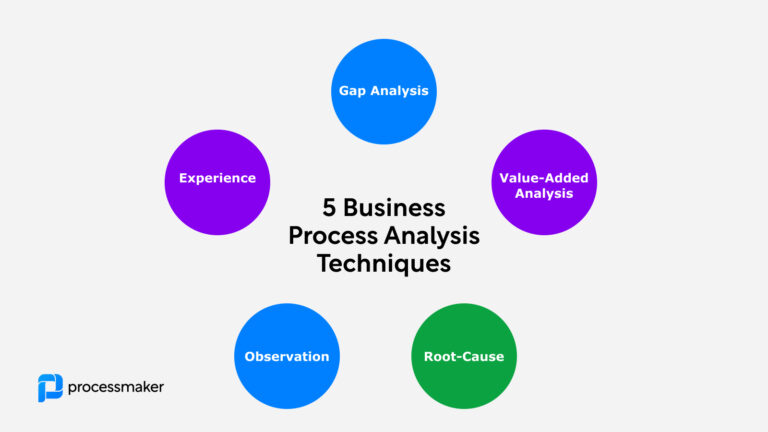Most businesses have some form of process controls in place to ensure people comply with the agreed task steps and workflows.
In this article, we go through popular methods, tools, and tips to ensure process compliance success.
What is process compliance?
Process compliance refers to the set of activities or procedures used to comply with rules, policies, standards, and regulations in an organization’s day-to-day operations.
Essentially, business process compliance serves as the backbone of a structured workflow, steering procedures, and protocols to align with the organizational objectives fostering efficiency and productivity. This intricate system encompasses a series of checks and balances designed to curb operational errors and streamline functionalities, facilitating a seamless harmony between diverse departments.
The role of process compliance enforcing accountability cannot be undervalued, as it encourages responsibility and enhances transparency, which are integral components in upholding the organizational structure. Moreover, by minimizing risks associated with legal repercussions and financial penalties, it acts as a protective shield, securing the firm’s integrity and financial stability.
The Importance of Process Compliance
Process compliance is not just a managerial tool, but a strategic approach to sculpting an environment where excellence and compliance align to drive sustainable growth and success.
Process compliance enforces accountability
One of the key goals of process control is the enforcement of accountability within an organization. By promoting a culture where responsibility is encouraged, it helps individuals to align their objectives with the broader goals of the organization.
Furthermore, it significantly enhances transparency, paving the way for an open and honest communication flow, which is integral to fostering trust and collaborative spirit. Additionally, by upholding the structural integrity of the organization, business process compliance ensures a harmonized and systematic approach to achieving the set goals. It creates a cohesive and efficient working environment and simplifies compliance management.
Process compliance minimizes risks
Equally significant is the role of process control in minimizing the risks that organizations are prone to encounter in their operational journey. A key advantage is its capacity to drastically reduce operational errors, thereby fostering a more streamlined and efficient workflow process. This is closely followed by its ability to mitigate legal consequences that could potentially emanate from non-compliance with industry standards and regulations.
By acting as a shield against financial penalties, process control protects the organization’s financial health, ensuring that resources are channeled toward growth and development initiatives, rather than paying fines and penalties. Hence, adopting process control is not just a prudent move, but a vital strategy for safeguarding organizational sustainability and success in the modern business landscape.
Key components of process compliance
You can think of process compliance as an ongoing set of policies and activities. It’s three key components include policy adherence, training and education, and process monitoring.
1. Policy adherence
Policy adherence is the first key component of process compliance. This involves establishing clearly defined rules and guidelines that serve as a roadmap to steer employees in the right direction.
Clear documentation is needed to ensure that all members of the organization are on the same page, fostering uniformity in action and vision. Furthermore, in a bid to keep pace with the evolving market trends and regulatory landscapes, the emphasis on regular updates and revisions cannot be understated, making the organization adaptable and ahead in its game.
2. Training and education
Even the best process control system requires active training and education to see results. The process of employee enlightenment goes beyond mere skill transfer, aiming to mold individuals into assets who can contribute significantly to the organization’s growth.
Skill enhancement is a continuous journey, where individuals are given the tools and platforms to hone their expertise, thereby bringing value and innovation to their roles. This educational journey is complemented by a system of knowledge dissemination, which ensures that valuable insights and information permeate through all levels of the organization, fostering a learning and collaborative culture.
3. Monitoring and evaluation
One more key component of process compliance is an active monitoring and evaluation plan, for example, through conformance checking. Regular assessments serve as a feedback mechanism, enabling the organization to identify areas of strengths and improvements, thereby tweaking strategies to align with the desired goals.
Furthermore, the integration of feedback becomes a valuable resource, offering avenues for innovation and refinement of existing business processes. At the heart of this system is the principle of continuous improvement, a proactive approach that seeks not just to maintain the status quo but to elevate the organization to new heights of excellence and efficiency, fostering a culture where progress is not just anticipated but celebrated.
Methods to ensure process compliance
Process compliance can be measured and improved by a set of tools and methods. Let’s look through some best practices.
Develop a robust compliance framework
A critical aspect of this framework is the clear delineation of roles, a strategy that fosters efficiency and reduces the scope for conflicts and overlaps. This goes hand in hand with the implementation of standard operating procedures, which serve as a blueprint, guiding the organization in achieving its objectives in a streamlined and coherent manner.
Additionally, to maintain the dynamism and relevance of the organization in a fluctuating market, regular policy updates are essential. This ensures the organization remains aligned with the current industry standards, fostering agility and responsiveness to the changing business ecosystem.
Utilize process intelligence technology
Process intelligence software can be an indispensable asset for any organization aiming to monitor and enforce compliance. The most popular options process mining and task mining can both give a data-driven foundation for measuring and enforcing compliance by comparing the as-is state of processes with the should-be goal of consistent and compliant business processes.
Augmenting this is digital record-keeping, a strategy that ensures transparency and facilitates easy retrieval of information, promoting a culture of accountability and efficiency.

Example of business process compliance software – ProcessMaker Process Intelligence
Encourage employee participation
Fostering a culture that encourages employee participation forms the bedrock of a collaborative and innovative organizational environment.
Establishing open communication channels is vital in nurturing a space where ideas can be exchanged freely, fostering innovation and mutual respect. Alongside this, employee training programs play a pivotal role in nurturing talent, and facilitating skill enhancement and personal growth, thereby contributing to the organization’s success.
The introduction of incentives and rewards serves as a motivational tool, encouraging employees to put forth their best efforts, thereby driving the organization toward achieving its goals with zest and zeal. Through this participative approach, organizations can foster a vibrant and positive workplace atmosphere, paving the way for success and growth in the long run.
The Road Ahead
Process compliance remains a vital aspect in the seamless functioning of any organization. By adhering to set procedures and guidelines, businesses can foster a disciplined, efficient, and risk-averse environment.
To delve deeper into this subject, consider exploring comprehensive resources and training modules available in the industry. Remember, a compliant organization is a step towards a successful and sustainable business future.
Take the initial step, embed business process compliance in your organizational culture, and witness the transformation it brings. Remember, it’s not just about adherence, it’s about fostering a culture of excellence and efficiency.





